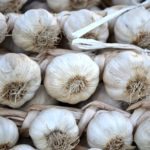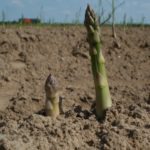5 Great Veggies to Grow in the Winter
Nov 6th 2016
Don’t let your garden stand empty this winter. With a little help, most of us can grow the vegetables mentioned below. In the northernmost states, a greenhouse, a high tunnel, a row cover or a small hot frame might be needed. Most southern areas of the US are well suited for growing winter crops outdoors if a thick layer of mulch (hay, dry leaves, straw, compost, or grass clippings) or a row cover is used. There are advantages of planting at this time of the year: less weeds, fewer insects, very little irrigation needed, and most of all, fresh vegetables.
Onions

Late fall or early winter are prime time to plant onions as long as the ground has not become solid yet. Winter onions are hardy enough to grow in a variety of conditions, but they prefer to soak in full sun. Onions do best in loose, well-drained soil. Mix some organic matter to the soil. Plant each set a few inches deep, and gently pack the soil around the set. Plant each set 4-6 inches apart. Cover your sets with a heavy layer of mulch. Water the onions three of four times the first two weeks and weed regularly if necessary.
Garlic

Garlic is best planted from the first day of autumn through November and is ready for harvest by the end of June. Ensure that your planting area is in full sun and the soil is well drained. Garlic does best in well amended soil using compost and manure. Clay soil is not good. All you need to get is some fresh garlic from a local nursery or there are many good sources online. Plant only the large cloves from each head. The cloves should be planted 6-8 inches apart for best results. Cover them with mulch. Water them deeply once a week the first few months.
Kale

Choose a kale variety that bests suits your growing climate. Most kale varieties are ready to harvest in 45-75 days. An area of full sun is best to grow kale. When planting kale for a winter crop, I always get kale starts from a nursery. It’s too late to start kale from seed. Dig a hole 12” deep and wide and add fresh compost. Keep the soil around your plants moist for the first month and add some fertilizer each month to produce a fast growing, healthy, and sweet tasting crop. Pick off any discolored or withered leaves when they appear. You can start harvesting the leaves once the plant is a few feet tall to use in stir fry dishes, omelets, or to add with other fruits or veggies for smoothies.
Asparagus

Do you love asparagus and have plenty of space in your garden for a permanent bed of asparagus, now is a good time to start. It takes a few years to establish, but the reward will be getting about 25 tender spears from each plant for a lifetime (25 years) of harvests. Sometimes, asparagus is planted in rows by digging a 1’ deep and 1’ wide row as long as your space allows. Fill it with good soil and compost. Asparagus is available a nurseries at this time of year in bunches of 25 and should come with planting instructions.
Pak Choi

Also called Bok Choy, is a mild flavored oriental vegetable, can be eaten raw but is usually stir fried or steamed and served with soy sauce. It can be grown in partial shade in warm regions or in full sun in northern zones. It can be planted in early autumn or late winter for a spring harvest. Buy starts from a nursery for planting in October to get a harvest before the first hard frost. A fairly rich soil or just soil from last summer’s garden would be fine. Use a row cover for late fall harvest.
Remember, some thick mulch or row cover will “baby” your late fall plantings. Give them good south exposure and plant in an area away from the strong north winds. The fresh veggies in late autumn and early winter will be a nice addition to your meals.

